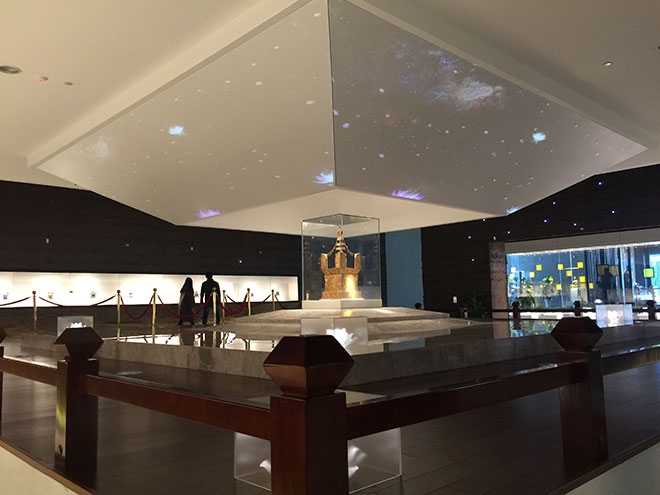Featuring one of the youngest Medieval Wonders of the World, the Lost Porcelain Tower is back in Nanjing after being destroyed for many years.
Allegedly discovered by the outside world in the 17th century by renowned Dutch traveller, Johan Nieuhof, the tower from then on became one of the most well-known pieces of Chinese cultural heritage abroad and subsequently, a national treasure around the world.
The Porcelain Tower of Nanjing is also known as Bao En Temple, which means “Temple of Gratitude”. It was first built during the reign of the Chinese Emperor Yong Le (1403-1425) in the early 15th century (Ming Dynasty) to honour his deceased mother.
Unfortunately, the tower was struck by lightning during an electrical storm in 1801, but was not entirely destroyed until the Taiping Rebellion in 1850, at the hands of rebels in order to prevent enemies from using it as an observation platform. Reduced to ruins, the once magnificent icon was untouched for a long time until reconstruction commenced a few years back.
Different from others on account of its exquisite beauty and design, the octagon-shaped pagoda stood nine-storeys high and had a staircase in the middle, spirally up 184 steps. One of its key features was the white porcelain bricks employed in construction that produced an illuminating effect when the sun rays reflect light during the day. Besides that, these white porcelain bricks were glazed and dyed with red, green, brown and yellow patterns to create images of animals, people, flowers and landscapes, while the top of the roof was adorned with a golden structure that resembled a pineapple. It was most beautiful at night as the structure would be illuminated by 140 porcelain lamps hung up on the walls.
The 13.3 hectare Porcelain Tower Heritage Park is now officially open to public after reconstruction ongoing since 2007. The park includes a conservatory of the ruins, Buddhist cultural museums and the Da Bao En Porcelain Tower. Another interesting feature is be the underground palace which houses exhibits on Buddhist relics and past archaeological discoveries.
The opening ceremony last month attracted flocks of visitors to witness the revival of this lost treasure, more than happy to welcome it back. “It is wonderful news to our ears when I heard about the reopening of the Porcelain Tower!” exclaimed Sun Min Min, a year 3 Mass Communication student from Nanjing Normal University. “I have heard about the beauty of the pagoda and have been wanting to see it for myself. Now I finally have the chance to do so,” she added.
What is even more pleasing is that regarding the second phase of developments for the area. According to a Chinese newspaper website, Sohu, it was revealed that the second stage of restoration includes expansion of the temple, establishment of Buddhism research centres as well as the creation of a new “Ancient Street”. It also aims to connect the park with three major scenic spots in Nanjing, namely the Confucius Temple, Qinhuai River and Yuhuatai. This is in the hope to create an interactive environment between the bustling marketplace and the serendipity of the temples.
An interview with a Malaysian tourist revealed her delight about the restoration of the tower and the park. 36 year-old female, Susan Lim, said, “The Heritage Park is a good source of Chinese cultural knowledge for the public, especially for the young… It is finally reconstructed after such a long time and I will definitely pay a visit to it.”
The Heritage Park came about thanks to a donation of ¥1 billion from Wanda Group’s Chairman, Wang Jianlin, one of China’s richest people. As a philanthropic cultural project in Nanjing, and according to Wanda Group’s reports, Mr Wang wanted to pass on and promote the idea of gratitude, filial piety and the core ideas of Chinese culture. The park plans in addition to hold an annual gratitude festival to advocate and promote activities related with filial piety and gratitude.
Entrance to the heritage park is priced at ¥120 per person with opening hours are from 8.30 am to 5.00 pm. Find it at 1 Yuhua Lu, outside of Nanjing Zhonghua Men.









